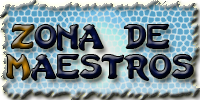The Parts of Speech / Partes del lenguaje
Traditional grammar classifies words based on eight parts of speech: the verb, the noun, the pronoun, the adjective, the adverb, the preposition, the conjunction, and the interjection.
La gramatica tradicional clasifica las palabras basada en ocho partes del lenguaje: el verbo, el sustantivo, el pronombre, el adjetivo, el adverbio, la preposicion, la conjuncion y la interseccion.
Each part of speech explains not what the word is, but how the word is used. In fact, the same word can be a noun in one sentence and a verb or adjective in the next. The next few examples show how a word's part of speech can change from one sentence to the next, and following them is a series of sections on the individual parts of speech, followed by an exercise.
Cada parte de lenguaje no explica lo que la palabra es, sino como es usada. De hecho, la misma palabra puede ser un sustantivo en una oracion y un verbo o adjetivo en la siguiente. Los proximos ejemplos muestran como una palabra como parte del lenguaje puede cambiar de una oracion a la siguiente, y tras ellos una serie de secciones sobre las partes individuales del lenguaje, seguidos de un ejercicio.
Books are made of ink, paper, and glue. (Los libros estan hechos de tinta, papel y pegamento.)
In this sentence, "books" is a noun, the subject of the sentence. (En esta oracion, "books" is un sustantivo, el sujeto de la oracion.)
Deborah waits patiently while Bridget books the tickets. (Deborah espara pacientemente mientras Bridget reserva los boletos)
Here "books" is a verb, and its subject is "Bridget." (Aqui "books" es un verbo, y el sujeto es Bridget)
We walk down the street. (Caminamos por la calle ¿quien? nosotros ... acuerdense que en español no es necesario ponerlo, pero en ingles si)
In this sentence, "walk" is a verb, and its subject is the pronoun "we." (En esta oracion, "walk" es un verbo, y el sujeto es el pronombre "we"/nosotros)
The mail carrier stood on the walk. (El cartero paro en el camino)
In this example, "walk" is a noun, which is part of a prepositional phrase describing where the mail carrier stood. (En este ejemplo, "walk" es un sustantivo, que es parte de una frase preposicional describiendo donde se paraba el cartero)
The town decided to build a new jail.(El pueblo decidio construir una nueva carcel)
Here "jail" is a noun, which is the object of the infinitive phrase "to build." (Aqui "jail" es un sustantivo,que es objeto del infinitivo "to build"/construir)
The sheriff told us that if we did not leave town immediately he would jail us. (El comisario nos dijo que si no dejabamos el pueblo inmediatamente él nos encarcelaria)
Here "jail" is part of the compound verb "would jail." (Aqui "jail" es parte del verbo compuesto "would jail"/encarcelar)
They heard high pitched cries in the middle of the night. ([ellos]Oyeron un grito muy agudo en mitad de la noche)
In this sentence, "cries" is a noun acting as the direct object of the verb "heard." (En esta oracion, "cries" es un sustantivo actuando como objeto directo del verbo "heard"/oyeron)
The baby cries all night long and all day long. (El bebé llora toda la noche y todo el dia)
But here "cries" is a verb that describes the actions of the subject of the sentence, the baby. (Pero aqui "cries" es un verbo que describe las acciones del sujeto de la oracion, el bebé)
Como pueden darse cuenta dependiendo del contexto en que se halle la palabra se determina su funcion: sustantivo o verbo, y por lo tanto su significado.
Suscribirse a:
Enviar comentarios (Atom)


 En este sitio encontrarás maestros que comparten sus experiencias docentes, materiales, ideas y mucho más. ¡Visitanos!
En este sitio encontrarás maestros que comparten sus experiencias docentes, materiales, ideas y mucho más. ¡Visitanos!
No hay comentarios:
Publicar un comentario